Uzbek Silk
Uzbekistan Silk production
Silk production in Margilan
In the early days, silk was considered a luxury product. Silk was the most valuable material that was utilized for the generation of money, as a tribute and as a means of payment. Pieces of silk cloth have been discovered in Northern Bactria (Kampir-Tepa, 3rd-2nd century BC), proving the complex evolution of silk production in the ancient times in Central Asia. Bukhara was originally the center of local silk production, after which the center was moved to the Ferghana Valley, particularly to Margilan.
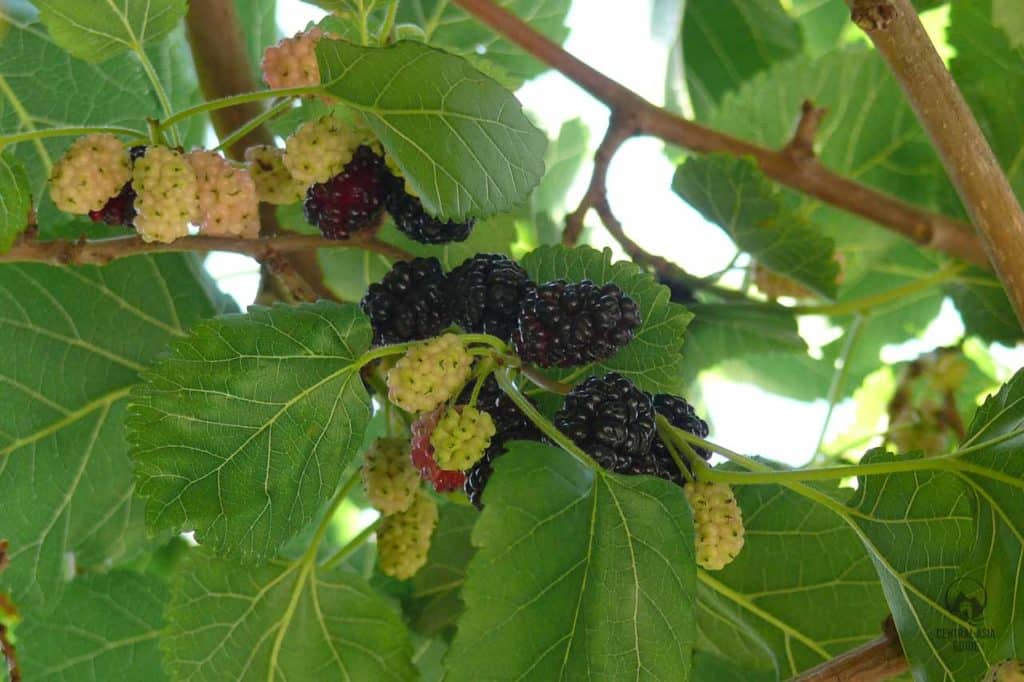
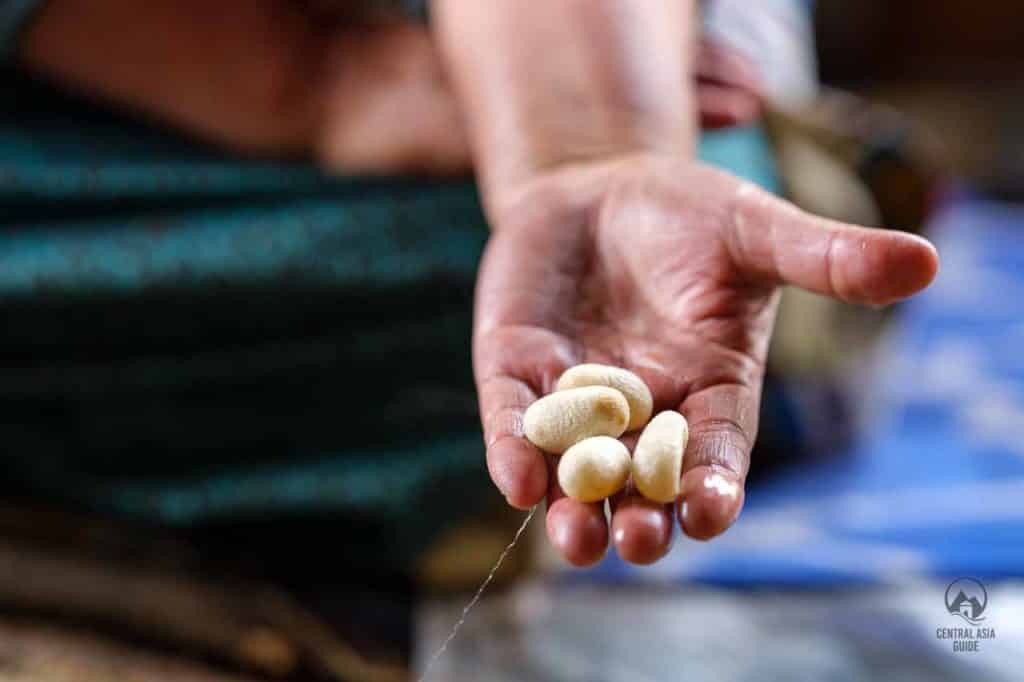
Silk production in the Margilan dates back to the 10th century. The city was famous for its great masters – craftsmen of silk fabrics such as adras, ikat, khan-atlas and many others. Gorgeous silk, manufactured in the city and its surroundings, was exported along the ancient Great Silk Road routes into Baghdad, Kashgar, Khurasan, Egypt and Greece and further and even today Margilan is considered as the silk capital of Uzbekistan. It produces the famous khan-atlas, which is still woven and dyed by hand with the old style technologies.
The secret to silk cultivation is to have both silkworms and mulberry trees, preferably the white mulberry, which is the only food the silkworms, or more accurately, what the silk butterfly caterpillars will eat. They are essentially mulberry leaf-eating machines. When the caterpillars are fully grown, they produce a cocoon by extruding silk from their bodies.
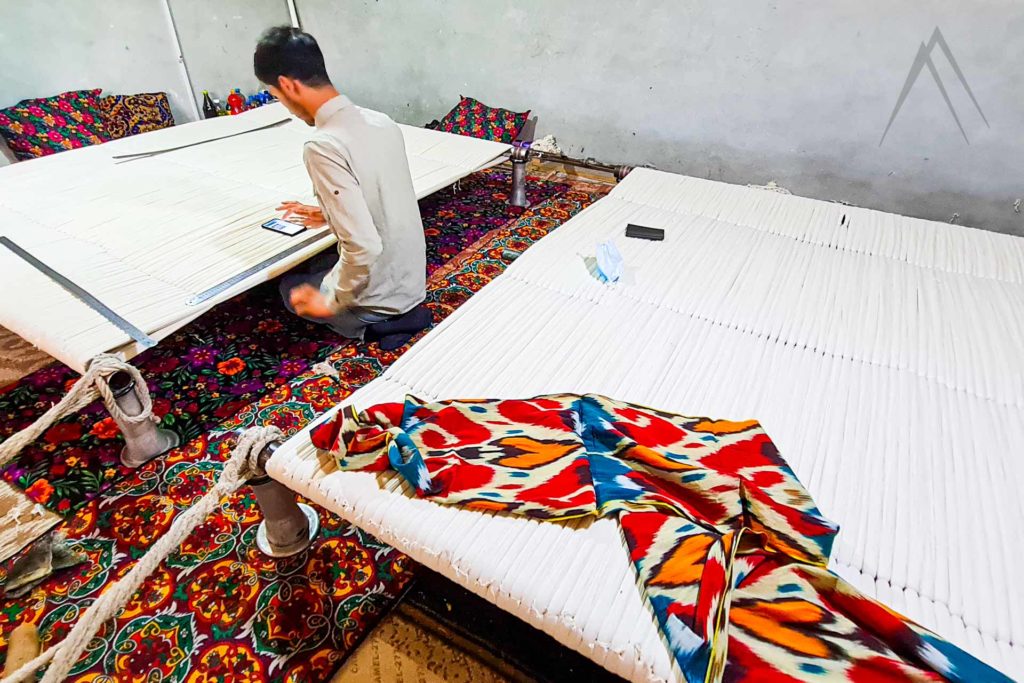
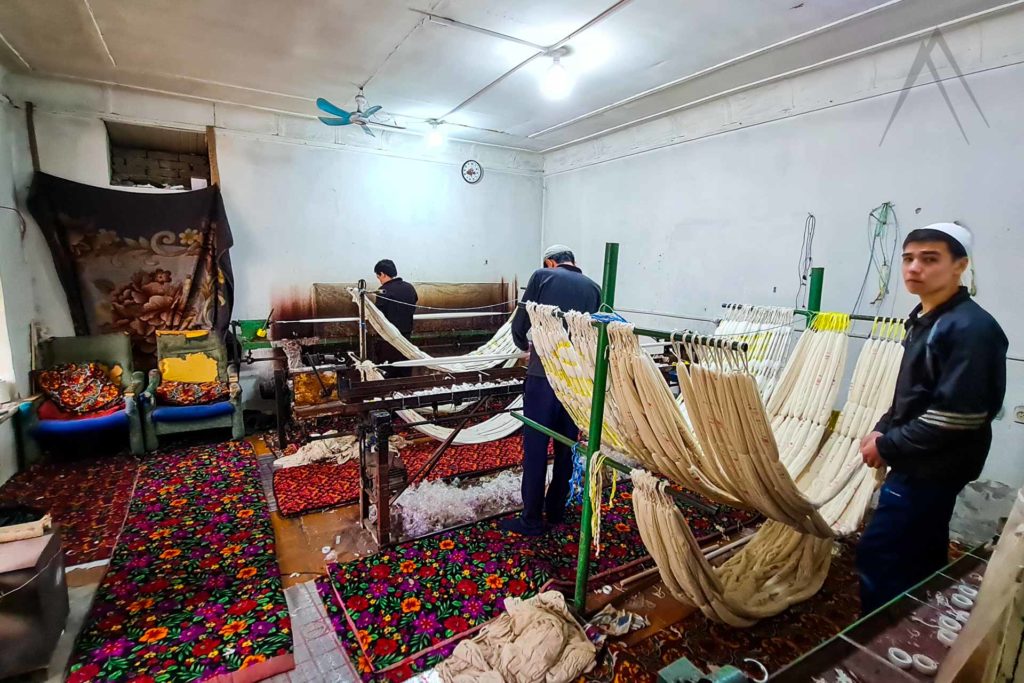
Margilan silk workshops
Margilan is an Ubek town and the center of Uzbekistan’s silk-producing industry locater right next to beg city of Fergana and about a 1-hour drive from Kokand. Margilan is an excellent town to observe the art of spinning and winding and dyeing and weaving silk by hand is a fascinating, unique experience. Over one thousand years of silk-producing history have shaped the “ikat” style Margilan is renowned for. From traditional bright colors to color combinations of the latest fashion, you will find something to suit every taste.
Visit one of the private homes and small enterprises, where you can be guided by the host and they will show you everything. From one workshop toom to another workshop you can see the entire process, from the unraveling of the pure white silk thread of the cocoons to the abr, and the tying and dying to the final weaving into amazingly and miraculously patterned fabrics.

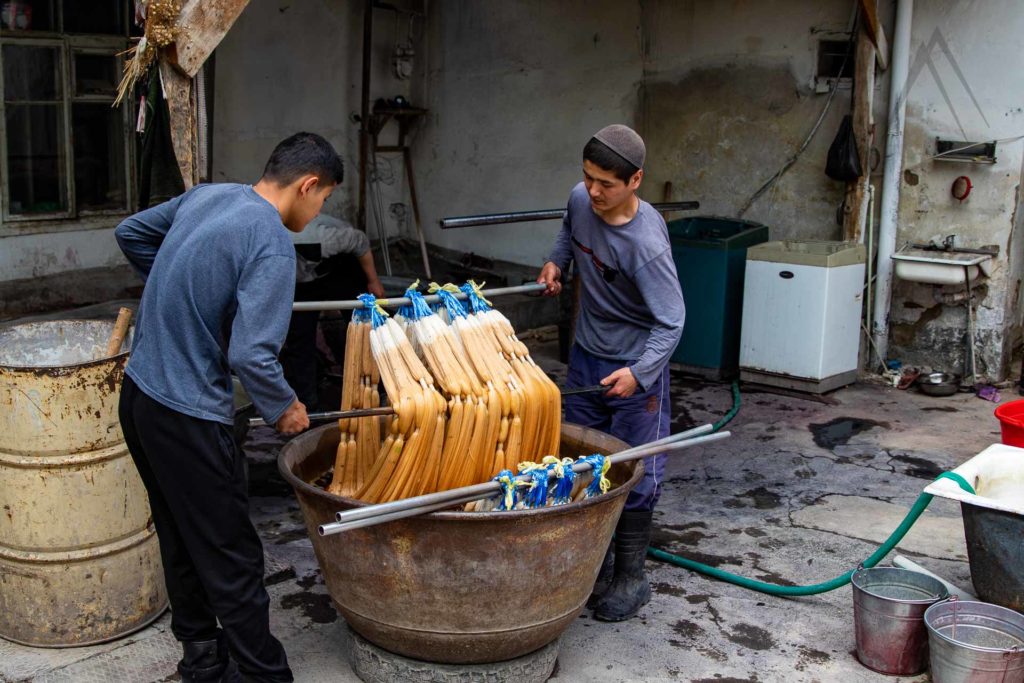
Ikat, Adras
The most popular method of Uzbek silk weaving is ikat or ikkat. Ikat is a Malay-Indonesian term for cloth which is patterned by dyeing the threads before it has been woven. In Uzbek, the term is used as a brand, literally “to tie a cloud”.
Fabric made in a way, using silk for warp and cotton threads for weft, is called adras. Adras was forgotten during the Soviet time of Uzbek history but has now been revived after the independency.
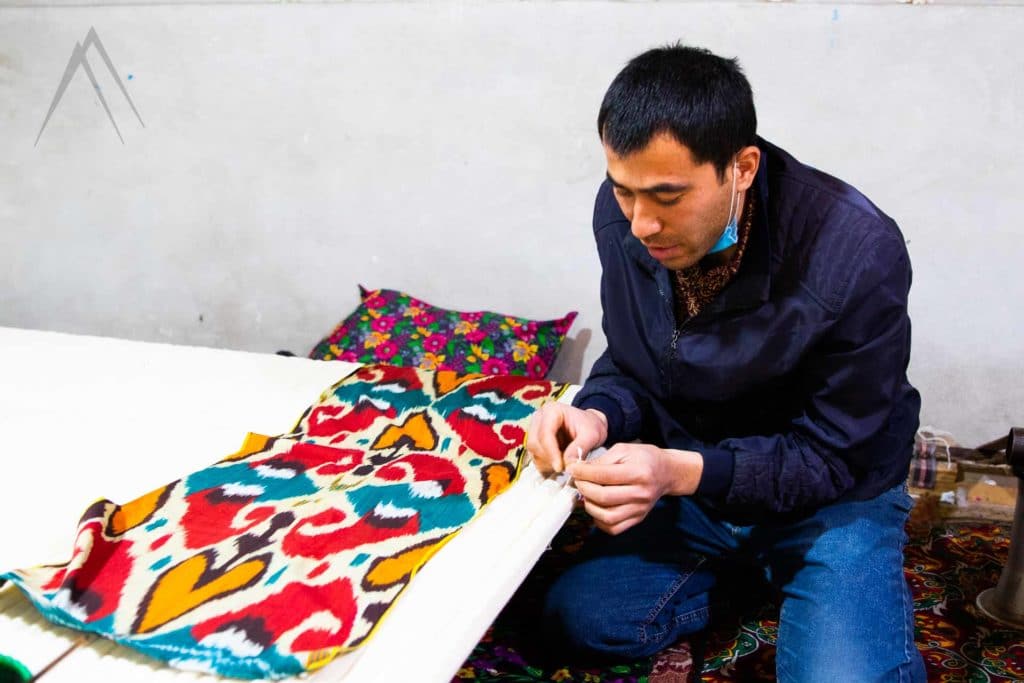
The process of producing silk
There are several steps processed, which are all done by hand: boiling the cocoons of the silkworms and extracting the silk thread, spinning and dyeing the silk, using vegetable dyes and sometimes crushed minerals, and lastly weaving the colorful ikat fabric on traditional looms.
In the workshop we visited, the host explained to us the drawing process, covering with rolling tape and dyeing method. Normally the boys are studying here and learning from the experienced masters.
Drawing the Uzbek silk patterns and taping
Masters draw the patterns on the silk thread using black clay under the pot. The patterns must be geometrically correct with several lines applied therefore the works is required, patients. Before coloring the white threads, in the beginning, they tape the parts which must be left as it is white.
Uzbek silk dyes
Depending on the type of pattern, silk can be dyed in different ways. For the stronger colors, the coloring water must be hot. The dyeing colors are usually made of natural plants.
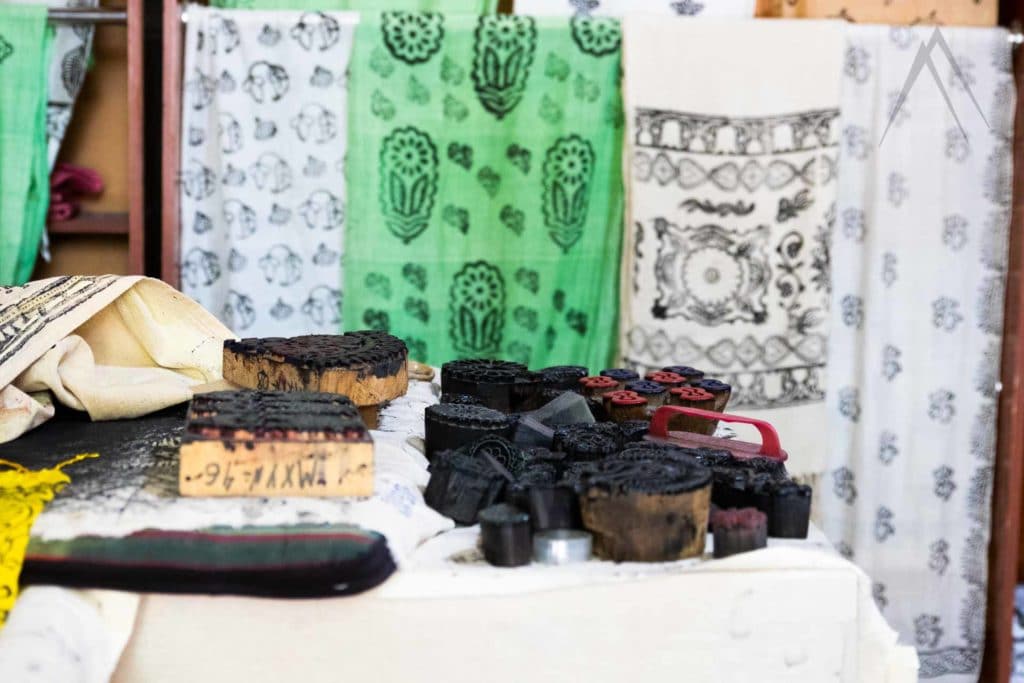
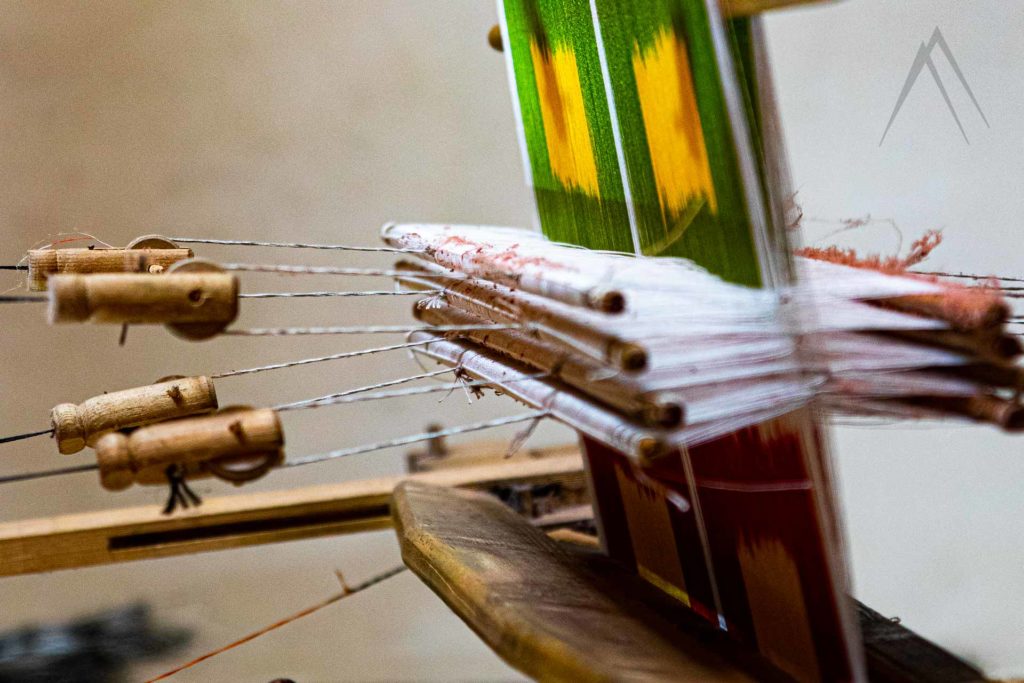
Ready Uzbek silk products
In the final phases of silk production the carefully prepared fabrics are put together into silk scarves or for example into super light silk night gowns that are nevertheless very durable. The best quality Uzbek silk products can be bought in the shops of the silk factories in Margilan and Bukhara as well but there the prices are a lot higher. These products make a great souvenir for your loved ones and are a great product that you can also use yourself.
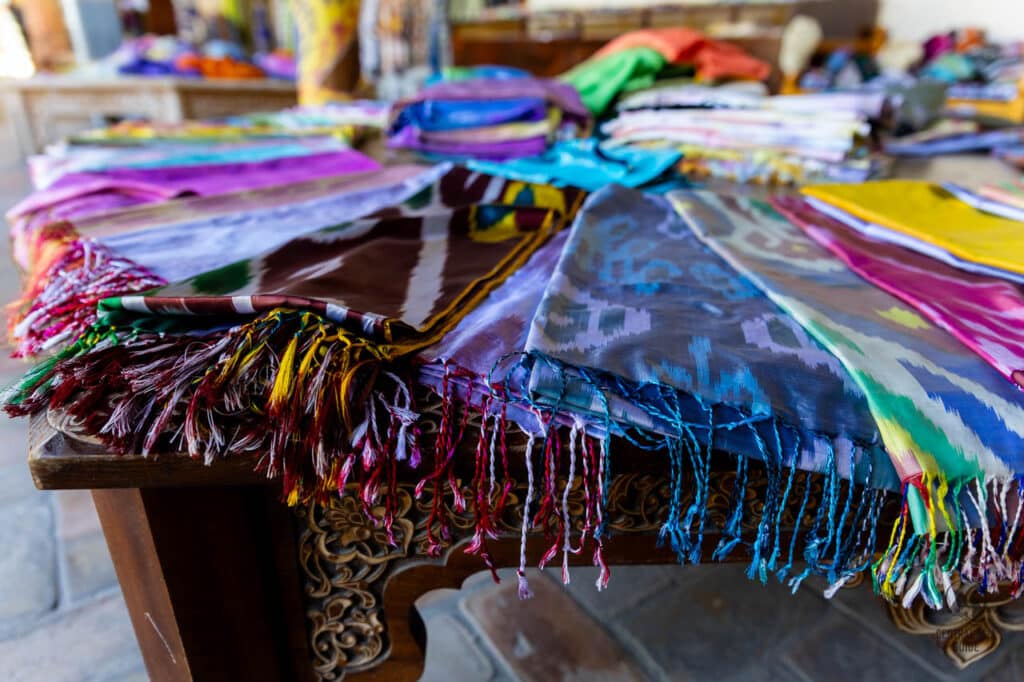
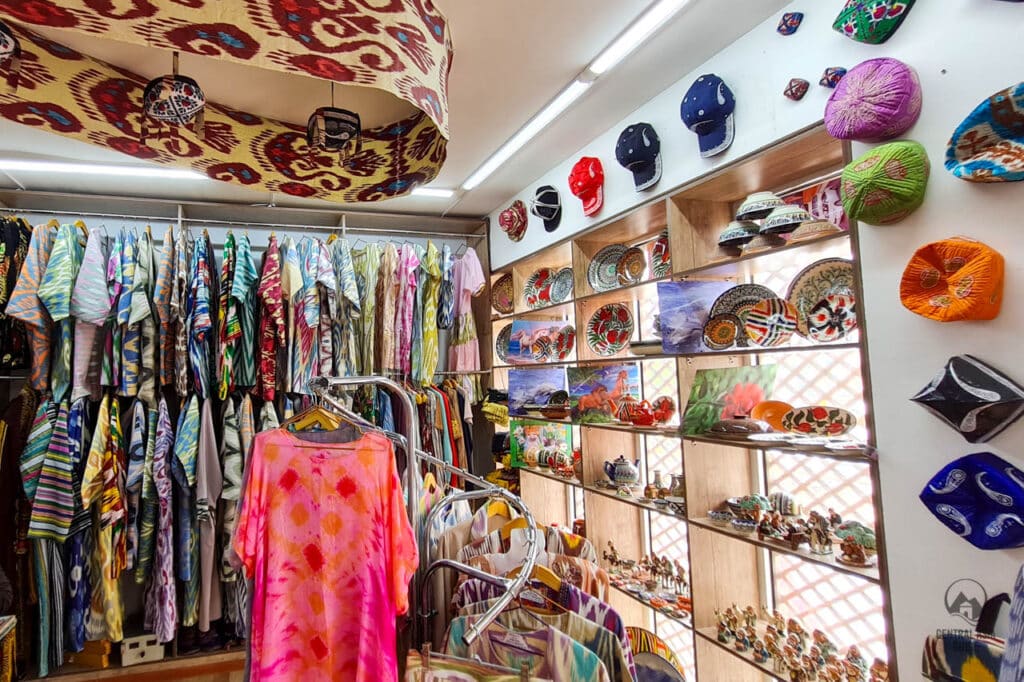
More about Uzbek Culture & Handicrafts
Page updated 7.1.2024